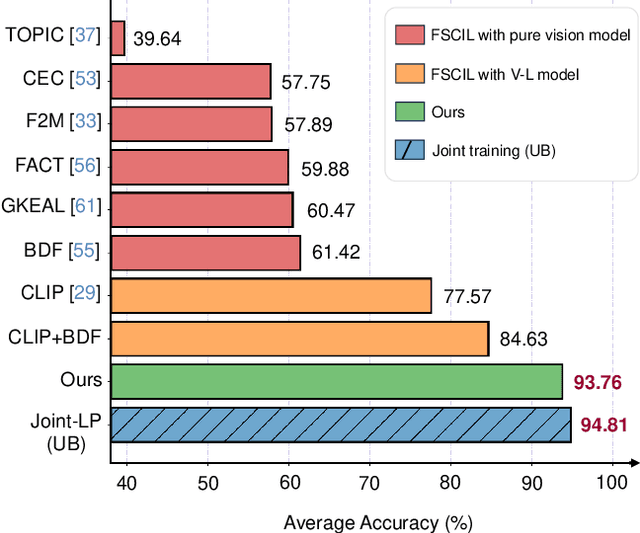Zhixing Chen
Coordinated Spectral Efficiency Prediction for Real-World 5G CoMP Systems
Aug 14, 2024Abstract:Coordinated multipoint (CoMP) systems incur substantial resource consumption due to the management of backhaul links and the coordination among various base stations (BSs). Accurate prediction of coordinated spectral efficiency (CSE) can guide the optimization of network parameters, resulting in enhanced resource utilization efficiency. However, characterizing the CSE is intractable due to the inherent complexity of the CoMP channel model and the diversity of the 5G dynamic network environment, which poses a great challenge for CSE prediction in real-world 5G CoMP systems. To address this challenge, in this letter, we propose a data-driven model-assisted approach. Initially, we leverage domain knowledge to preprocess the collected raw data, thereby creating a well-informed dataset. Within this dataset, we explicitly define the target variable and the input feature space relevant to channel statistics for CSE prediction. Subsequently, a residual-based network model is built to capture the high-dimensional non-linear mapping function from the channel statistics to the CSE. The effectiveness of the proposed approach is validated by experimental results on real-world data.
Learning Prompt with Distribution-Based Feature Replay for Few-Shot Class-Incremental Learning
Jan 03, 2024



Abstract:Few-shot Class-Incremental Learning (FSCIL) aims to continuously learn new classes based on very limited training data without forgetting the old ones encountered. Existing studies solely relied on pure visual networks, while in this paper we solved FSCIL by leveraging the Vision-Language model (e.g., CLIP) and propose a simple yet effective framework, named Learning Prompt with Distribution-based Feature Replay (LP-DiF). We observe that simply using CLIP for zero-shot evaluation can substantially outperform the most influential methods. Then, prompt tuning technique is involved to further improve its adaptation ability, allowing the model to continually capture specific knowledge from each session. To prevent the learnable prompt from forgetting old knowledge in the new session, we propose a pseudo-feature replay approach. Specifically, we preserve the old knowledge of each class by maintaining a feature-level Gaussian distribution with a diagonal covariance matrix, which is estimated by the image features of training images and synthesized features generated from a VAE. When progressing to a new session, pseudo-features are sampled from old-class distributions combined with training images of the current session to optimize the prompt, thus enabling the model to learn new knowledge while retaining old knowledge. Experiments on three prevalent benchmarks, i.e., CIFAR100, mini-ImageNet, CUB-200, and two more challenging benchmarks, i.e., SUN-397 and CUB-200$^*$ proposed in this paper showcase the superiority of LP-DiF, achieving new state-of-the-art (SOTA) in FSCIL. Code is publicly available at https://github.com/1170300714/LP-DiF.
Once and for All: Scheduling Multiple Users Using Statistical CSI under Fixed Wireless Access
Apr 27, 2023Abstract:Conventional multi-user scheduling schemes are designed based on instantaneous channel state information (CSI), indicating that decisions must be made every transmission time interval (TTI) which lasts at most several milliseconds. Only quite simple approaches can be exploited under this stringent time constraint, resulting in less than satisfactory scheduling performance. In this paper, we investigate the scheduling problem of a fixed wireless access (FWA) network using only statistical CSI. Thanks to their fixed positions, user terminals in FWA can easily provide reliable large-scale CSI lasting tens or even hundreds of TTIs. Inspired by this appealing fact, we propose an \emph{`once-and-for-all'} scheduling approach, i.e. given multiple TTIs sharing identical statistical CSI, only a single high-quality scheduling decision lasting across all TTIs shall be taken rather than repeatedly making low-quality decisions every TTI. The proposed scheduling design is essentially a mixed-integer non-smooth non-convex stochastic problem with the objective of maximizing the weighted sum rate as well as the number of active users. We firstly replace the indicator functions in the considered problem by well-chosen sigmoid functions to tackle the non-smoothness. Via leveraging deterministic equivalent technique, we then convert the original stochastic problem into an approximated deterministic one, followed by linear relaxation of the integer constraints. However, the converted problem is still highly non-convex due to implicit equation constraints introduced by deterministic equivalent. To address this issue, we employ implicit optimization technique so that the gradient can be derived explicitly, with which we propose an algorithm design based on accelerated Frank-Wolfe method. Numerical results verify the effectiveness of our proposed scheduling scheme over state-of-the-art.
 Add to Chrome
Add to Chrome Add to Firefox
Add to Firefox Add to Edge
Add to Edge